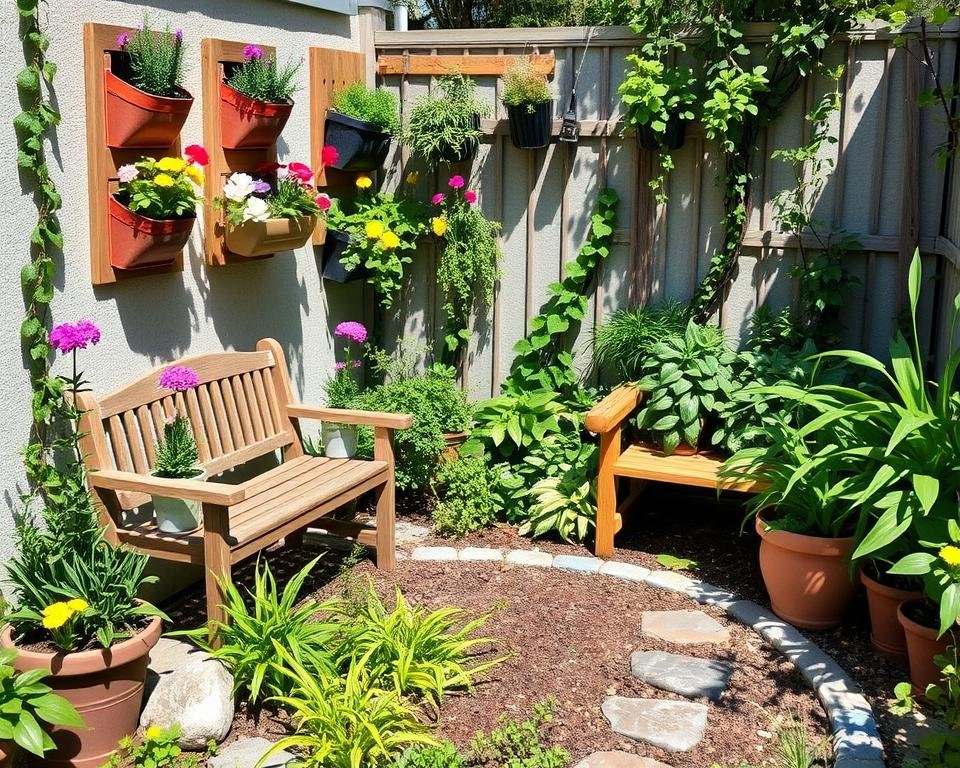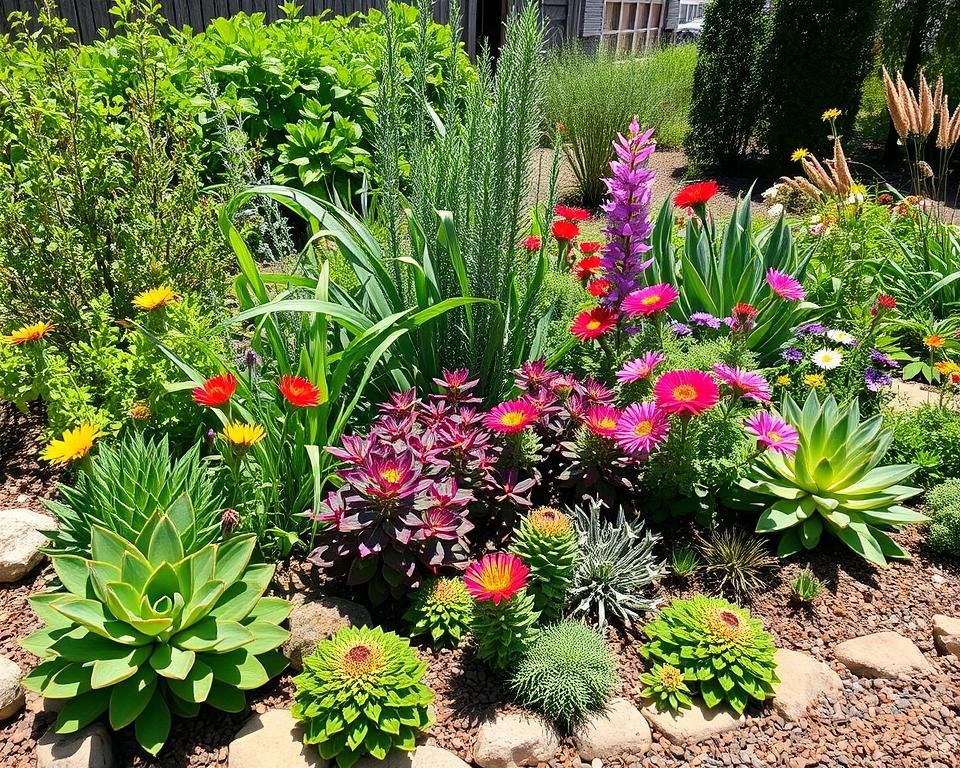Have you ever pondered the influence of native plants on your local ecosystem? In today’s world, where sustainability and environmental awareness are paramount, using native plants in your garden can be transformative. But what are the advantages of opting for native species over non-native ones? Get ready to be astonished as we reveal the incredible benefits native plants can offer to your garden.
Explore why native plants are a sustainable choice, including their role in sup
Choosing the right plants for your garden can significantly impact its sustainability. Native plants stand out as an eco-friendly, low-maintenance option. They’ve adapted over centuries to thrive in local climates and soils, enhancing your garden’s beauty and resilience.
Native plants play a crucial role in supporting local ecosystems. They offer vital food and shelter for native wildlife, including pollinators like bees and butterflies. By adding native species to your garden, you attract a variety of beneficial insects and birds, boosting your landscape’s biodiversity.
Native plants are also remarkably resilient. They need less water, fertilizer, and care compared to non-native species. This means they consume fewer resources and have a lower environmental impact, making them perfect for eco-conscious gardeners.
Moreover, native plants have extensive root systems that stabilize soil, prevent erosion, and improve water absorption. This is especially beneficial in areas with drought or heavy rainfall, helping manage water resources more efficiently.
Exploring the benefits of native plants allows gardeners to make sustainable choices. Whether starting a new garden or revitalizing an existing one, using native species can be a rewarding experience.
Low-Maintenance Gardening Bliss
Native plants revolutionize gardening for those who prefer a low-maintenance approach. These species are not only drought-resistant but also thrive with minimal care. By integrating native plants into your garden, you eliminate the need for constant watering and fertilizing. This allows you to enjoy your outdoor space with less effort.
Drought-Resistant and Hardy Natives
Native plants are perfectly suited to local climates and soils, needing less water than non-native species. They can endure droughts, reducing the need for frequent watering. Additionally, they are more resistant to pests and diseases, which minimizes the time and resources needed for their upkeep.
Reduced Watering and Fertilizing Needs
Native plants significantly cut down on watering and fertilizing needs. They have evolved to excel in their natural environments, reducing the need for constant irrigation and synthetic fertilizers. By selecting native species, you can cultivate a lush, vibrant garden while conserving water and reducing environmental impact.
| Native Plants | Non-Native Plants |
|---|---|
| Require less water and fertilizer | Require more frequent watering and fertilizing |
| Adapted to local climate and soil conditions | May struggle in unfamiliar environments |
| Naturally resilient to pests and diseases | More susceptible to pest and disease problems |
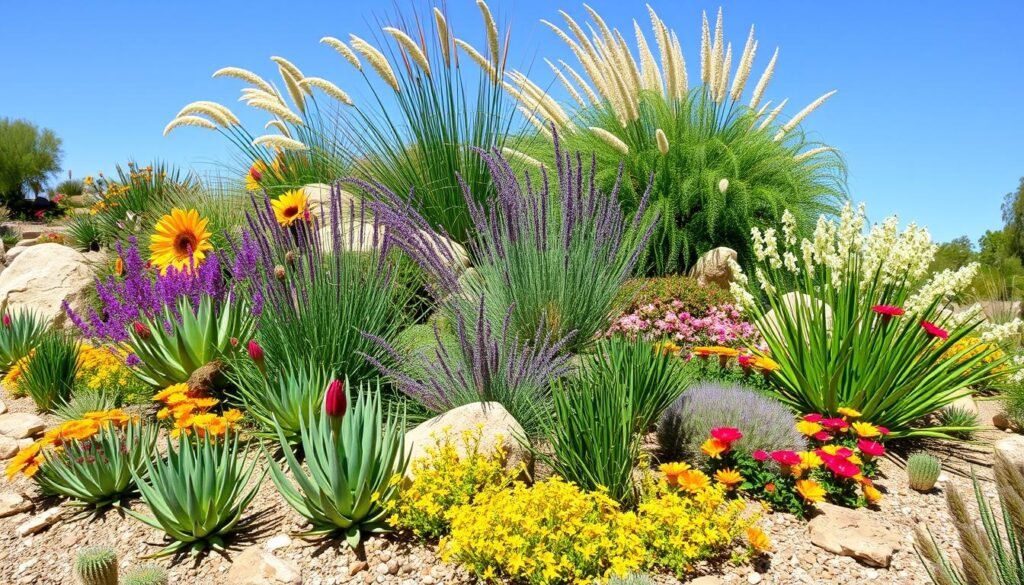
Embracing native plants transforms your garden into a low-maintenance haven. It allows you to enjoy the natural world’s beauty without the upkeep of traditional gardens. Discover the ease of gardening with drought-resistant, hardy native species that need less watering and fertilizing.
Eco-Friendly Landscaping for a Greener Planet
Choosing native plants for your garden is a smart move for the environment. These plants fit perfectly with the local climate and soil, needing less water, fertilizers, and upkeep. This choice cuts down on your carbon footprint and helps keep natural habitats intact, supporting local biodiversity.
Native plants are essential for maintaining your local ecosystem’s balance. They offer food and shelter to native wildlife, including pollinators and beneficial insects. This is vital for the environment’s health. It also aids in preserving natural habitats and boosts biodiversity, leading to a greener, more resilient planet.
Native plants are also low-maintenance, which is a big plus. They are often drought-resistant and can thrive with minimal care. This saves you time and effort, and it’s better for the environment, conserving natural resources.
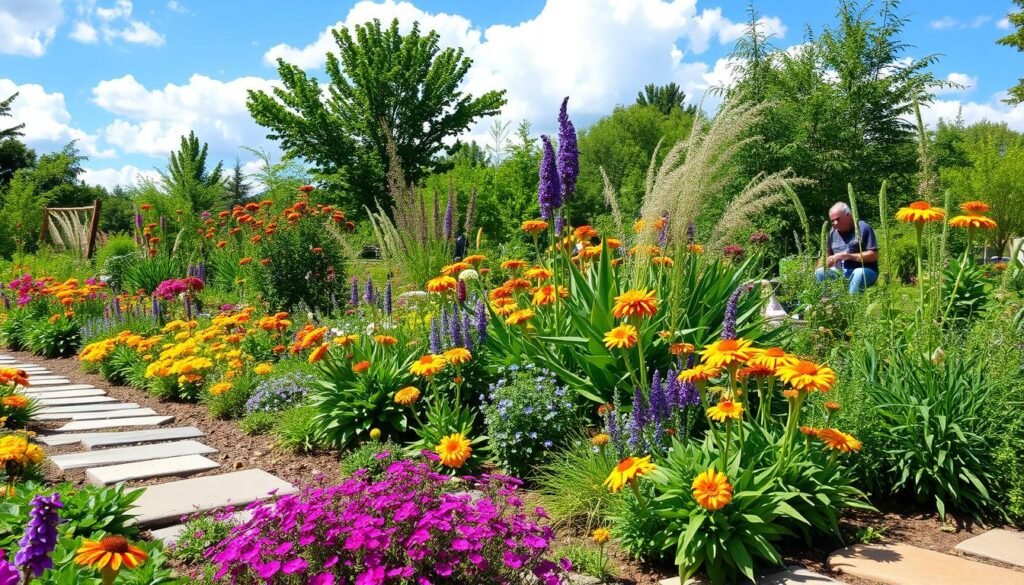
By using native plants in your garden, you help protect our natural ecosystems. This approach to landscaping makes your outdoor space more beautiful. It also supports the health and resilience of your local environment, making a significant difference for a greener planet.
Attract Local Wildlife and Support Biodiversity
Choosing native plants for your garden does more than beautify your landscape. It also creates a vital habitat for local wildlife. By planting species native to your area, you attract a variety of birds, butterflies, and beneficial insects. These creatures are essential for supporting biodiversity in your local ecosystem.
Create a Natural Habitat
Native plants are key to a thriving natural habitat. They provide food, shelter, and nesting sites for many local wildlife species. From nectar-rich flowers that draw hummingbirds and butterflies to berry-producing shrubs that feed songbirds, native plants foster a self-sustaining ecosystem in your garden.
Encourage Pollinators and Beneficial Insects
Pollinators like bees, butterflies, and moths are vital for your garden’s health and the environment. Native plants are perfectly adapted to offer the nectar and pollen these insects need to thrive. By supporting pollinators, you enhance biodiversity and enjoy increased fruit and vegetable production in your garden.
| Native Plant | Attracts | Benefits |
|---|---|---|
| Coneflower (Echinacea purpurea) | Butterflies, bees, hummingbirds | Drought-tolerant, low-maintenance, provides nectar and pollen |
| Milkweed (Asclepias spp.) | Monarch butterflies | Vital host plant for monarch caterpillars, supports biodiversity |
| Serviceberry (Amelanchier spp.) | Birds, pollinators | Produces edible berries, provides food and shelter for wildlife |
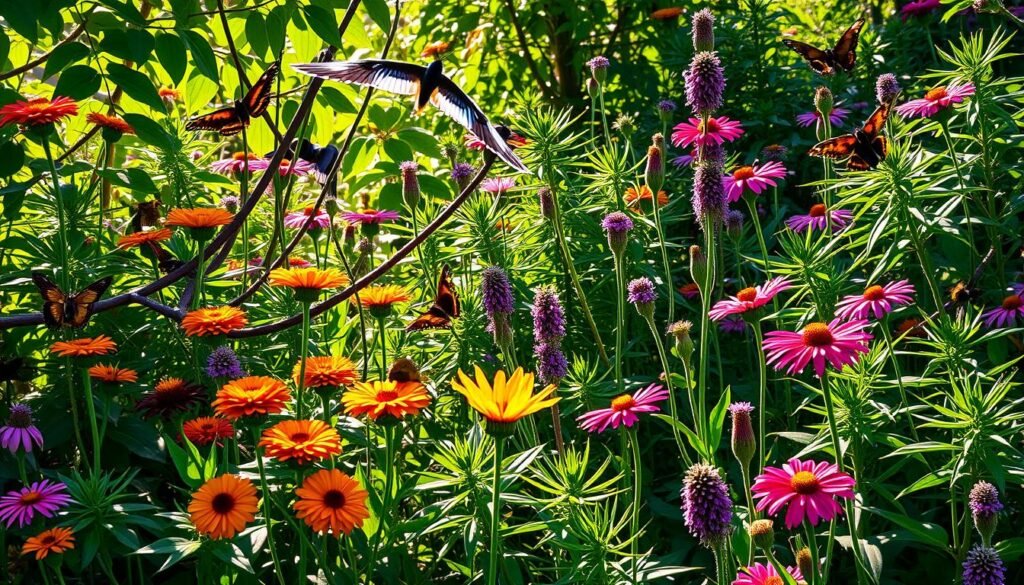
Incorporating native plants into your garden creates a thriving habitat that supports local wildlife and boosts biodiversity. This not only benefits the environment but also brings joy as you witness the vibrant life your garden attracts.
Water Conservation: A Vital Benefit
Native plants are a game-changer for gardeners looking to save water. They’ve adapted to local climates, needing much less water than non-native plants. This makes them ideal for those focused on sustainable water use.
Native plants are perfectly suited to the area’s rainfall and soil. They stay green and healthy with little watering. By choosing drought-resistant natives, you cut down your water use and help your community save water too.
Native plants also have deep roots, enhancing soil absorption and cutting down runoff. This boosts groundwater recharge and lessens drought impacts. By choosing native species, you create a garden that’s in sync with nature and supports water conservation.
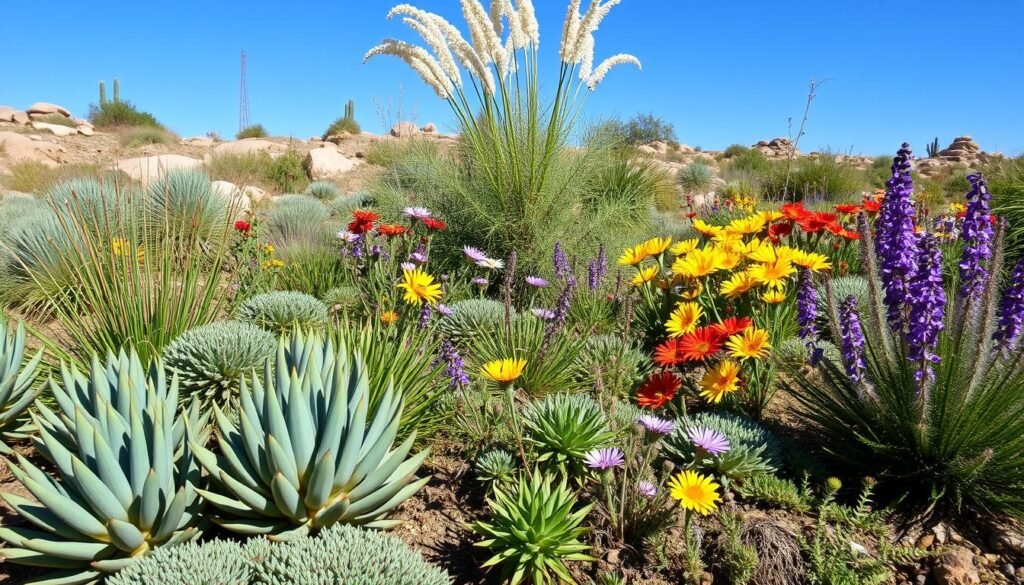
Native plants are a smart choice for water conservation, environmental impact reduction, and low-maintenance gardens. They turn your outdoor space into a water-efficient haven that benefits your local ecosystem.
Pest-Resistant and Climate-Adapted
Incorporating native plants into your garden offers a significant advantage: their remarkable resistance to local pests and diseases. Unlike non-native species, native plants have evolved natural defenses against the region’s specific challenges. This reduces the need for costly and potentially harmful pesticides, allowing for a healthy, vibrant garden with minimal chemical use.
Fewer Pest Problems
Native plants have developed intricate relationships with the local ecosystem over centuries. They often produce natural repellents or deterrents that discourage pests. This results in a lush, thriving landscape with fewer instances of infestations or damage. You can then focus on the beauty and serenity of your outdoor oasis.
Resilient to Local Conditions
Beyond their pest-resistance, native plants are remarkably well-adapted to the local climate and soil conditions. They can withstand temperature, precipitation, and environmental fluctuations unique to your region. This climate-adaptability ensures your garden thrives, even in challenging weather or changing environmental conditions.
FAQ
What are the benefits of using native plants in my garden?
Native plants support local ecosystems, conserve water, and reduce maintenance. They are well-suited to the local climate and soil. This makes them more resilient and environmentally friendly.
How do native plants help conserve water?
Native plants need less water to thrive, thanks to their adaptation to the local climate. This makes them ideal for water-conscious gardening. They reduce the need for frequent watering.
Are native plants more pest-resistant?
Yes, native plants resist local pests and diseases better than non-native species. This reduces the need for pesticides and intensive care. They are a more sustainable choice for your garden.
How do native plants support biodiversity?
Native plants offer food and shelter for local wildlife, including pollinators and beneficial insects. By planting native species, you create a thriving habitat. This supports your local ecosystem’s biodiversity.
Are native plants low-maintenance?
Yes, native plants are more drought-resistant and hardy than non-native species. They require less water, fertilizer, and maintenance. This makes them perfect for low-maintenance gardening, allowing for a beautiful garden with minimal effort.
How do native plants help adapt to local climate conditions?
Native plants are adapted to your local climate and soil, having evolved over time. They are more resilient and better equipped to handle regional challenges. This includes extreme temperatures, drought, or other environmental stresses.
